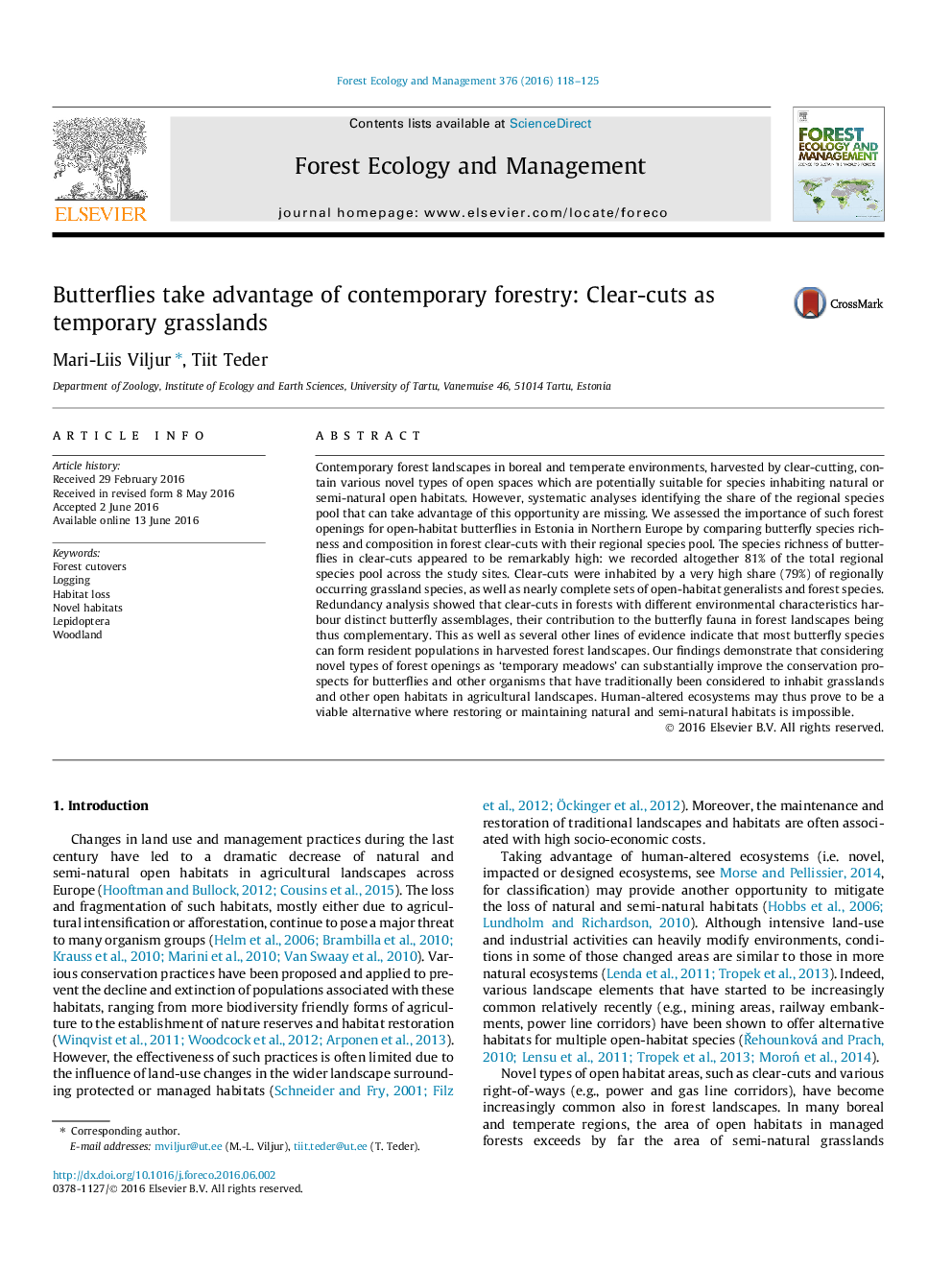| Article ID | Journal | Published Year | Pages | File Type |
|---|---|---|---|---|
| 6542108 | Forest Ecology and Management | 2016 | 8 Pages |
Abstract
Contemporary forest landscapes in boreal and temperate environments, harvested by clear-cutting, contain various novel types of open spaces which are potentially suitable for species inhabiting natural or semi-natural open habitats. However, systematic analyses identifying the share of the regional species pool that can take advantage of this opportunity are missing. We assessed the importance of such forest openings for open-habitat butterflies in Estonia in Northern Europe by comparing butterfly species richness and composition in forest clear-cuts with their regional species pool. The species richness of butterflies in clear-cuts appeared to be remarkably high: we recorded altogether 81% of the total regional species pool across the study sites. Clear-cuts were inhabited by a very high share (79%) of regionally occurring grassland species, as well as nearly complete sets of open-habitat generalists and forest species. Redundancy analysis showed that clear-cuts in forests with different environmental characteristics harbour distinct butterfly assemblages, their contribution to the butterfly fauna in forest landscapes being thus complementary. This as well as several other lines of evidence indicate that most butterfly species can form resident populations in harvested forest landscapes. Our findings demonstrate that considering novel types of forest openings as 'temporary meadows' can substantially improve the conservation prospects for butterflies and other organisms that have traditionally been considered to inhabit grasslands and other open habitats in agricultural landscapes. Human-altered ecosystems may thus prove to be a viable alternative where restoring or maintaining natural and semi-natural habitats is impossible.
Related Topics
Life Sciences
Agricultural and Biological Sciences
Ecology, Evolution, Behavior and Systematics
Authors
Mari-Liis Viljur, Tiit Teder,
